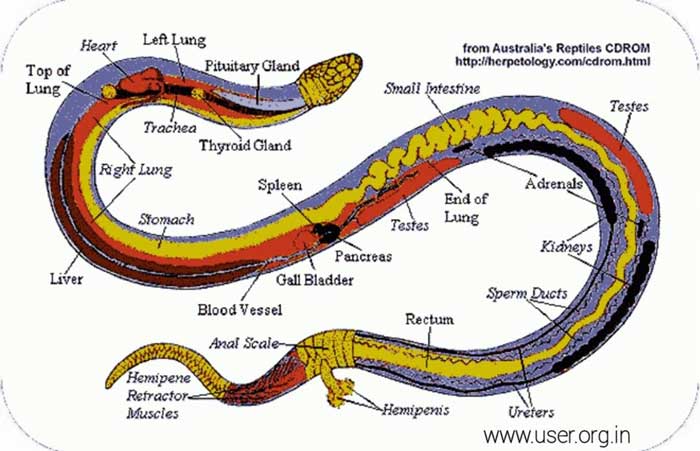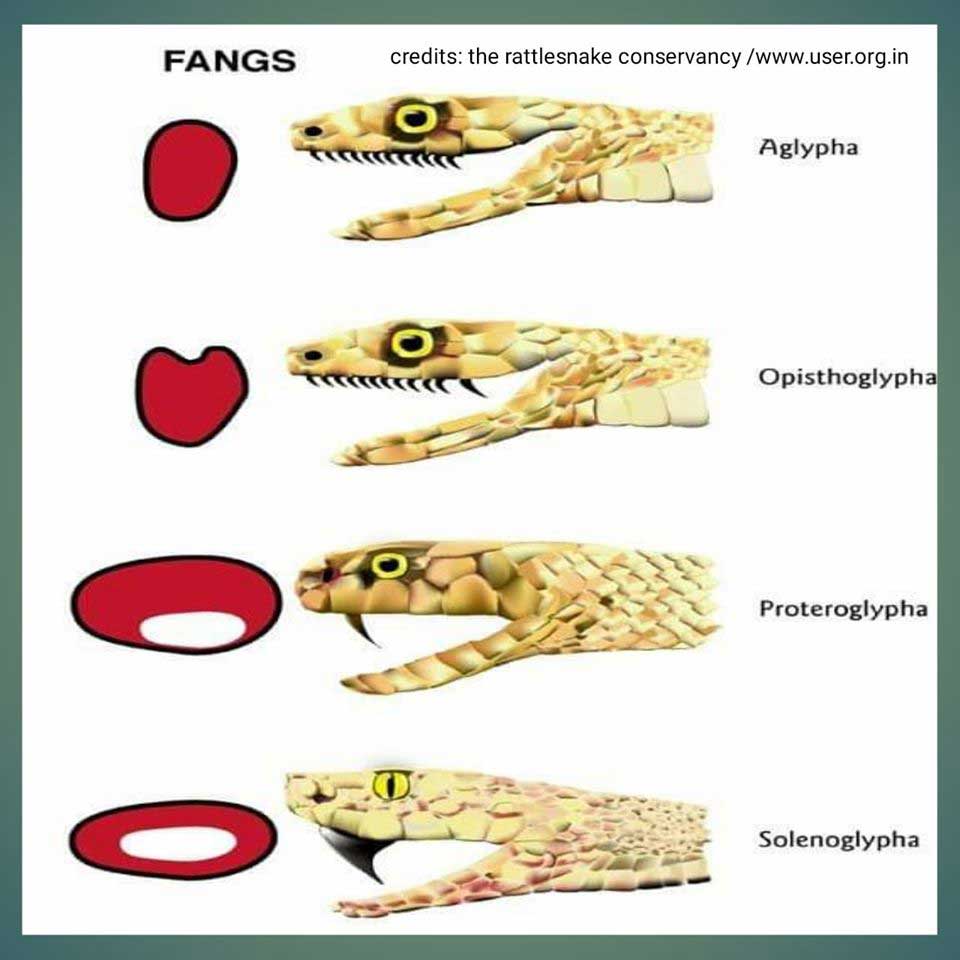
SnakeAnatomy
Snake's body is basically a long tube like structure, it is possible to partition their main anatomical parts into sections.
* If we lay the snake out straight on a table with its head on our left, moving from left to right,
1.The first quarter portion of the snake consists of the head, esophagus, trachea, and the heart. Those are the major organs and parts.
2. The second quarter of the snake, are the top of the lungs, liver, and then three-fourths of the way down the liver, the stomach.
3.In the third quarter of the snake, we encounter the gall bladder, spleen and the pancreas (or the splenopancreas depending on the species). Following this triad of organs we will find the gonads (testes or ovaries). Coursing between these structures is the small intestine, and adjacent to them is the right lung (and in some species the left lung, as well).
4.In the last quarter,of the snake, we’ll find the junction between the small and large intestine, the cecum (if present), the kidneys (right in front of the left) and the cloaca. If you can remember this anatomical map for snake, you can be a good herpetologist.

How to determine snakes gender
Probing a snake involves inserting a thin metal rod (called a snake probe) into the cloacal vent of the snake while it is awake.
This special probe can be inserted further in males since they have a hemipenis on either side of the vent. The probe will drop down into one of these spaces that point towards the tip of the tail.
When probing a female snake, the probe will not drop down into the vent very far. That's because there is no space for it to go when you are directing the probe towards the tip of the tail. Females only have small scent gland spaces.
Picture two long socks inside the tail of a male snake that open up at the vent of the snake and you are basically visualizing the hemipenis. The lubricated probe will slide into the vent in the direction of the tail and into one of the hemipenis.
*Note:
If it is a female, the probe will only drop in an average of one to three scales.
If it is a male, it will drop in an average of nine to fifteen scales.

Snake fang facts
Fangs are defined as the specialized teeth used for the venom deliverance in animals.
In snakes, three types of fangs fit three venomous groups currently classified. 1.Vipers (E.g. Russell's viper, Saw scaled viper and Gaboon viper etc).
2.Elapids (E.g. Spectacled Cobra, Black mamba, Kraits and Spitting cobra etc).
3.Colubrids (E.g. Green vine snake and Boomslang etc).
And their fangs are classified as
1.Solenoglyphous(movable fangs)
2.Proteroglyphous(fixed fangs)and
3.Opisthoglyphous(Rear fangs).
Each of these groups were separated by unique design and the method they inject the venom into their preys.
Venomous snakes actually have the ability to control their venom, meaning they can deliver what's called the "dry bite" if the want.
This is typical when they are striking out of defense instead of a predator drive to kill.
This suggests venom is designed for feeding and not for defense!
*Note: Aglypha snakes are the group without teeth grooves or specialzed venom injecting fangs.
(E.g. boas, pythons and other non venomous snakes).Source: Reptile magazine
